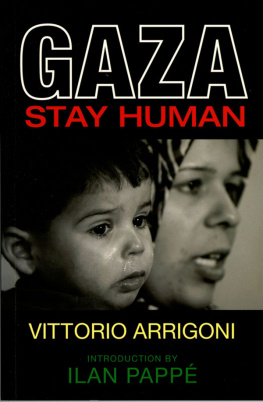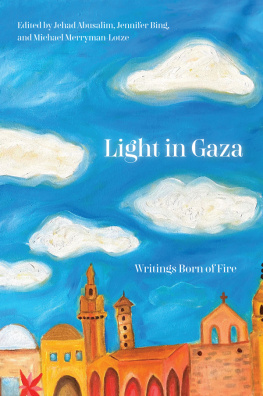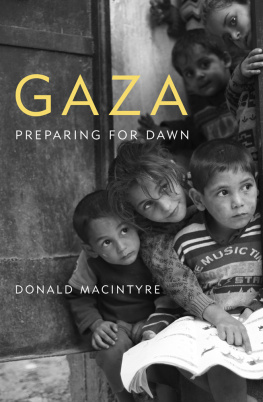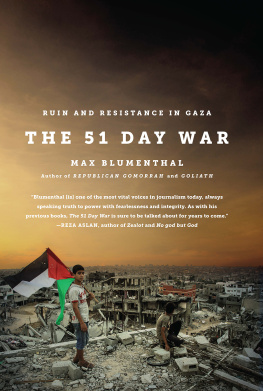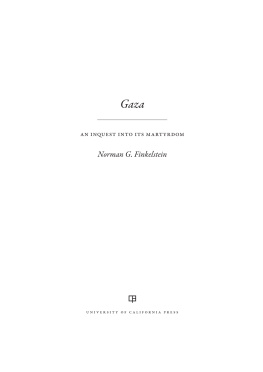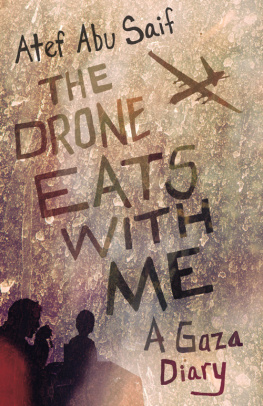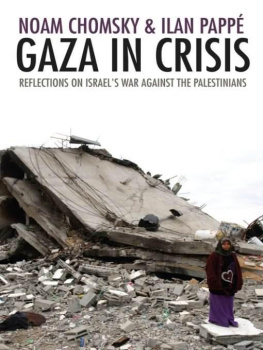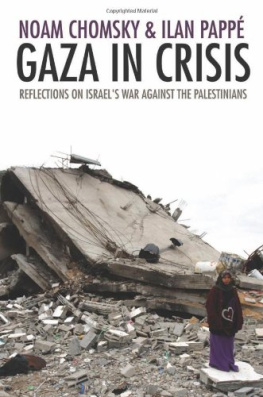

First published in England by
Kube Publishing Ltd.,
Markfield Conference Centre
Ratby Lane, Markfield,
Leicestershire LE67 9SY
United Kingdom
Tel: +44 (0) 1530 249230
Fax: +44 (0) 1530 249656
Website: www.kubepublishing.com
Email:
Originally published as Gaza: Restiamo Umani,
Il Manifesto Manifestolibri, 2009.
English translation Kube Publishing, 2010.
2nd impression, 2011.
All rights reserved
The right of Vittorio Arrigoni to be
identified as the author of this work has been
asserted by him in accordance with the
Copyright, Designs and Patents Act, 1988.
Cataloguing-in-Publication Details are available from the British Library
ISBN 978-1-84774-019-9 paperback
eISBN: 978-1-84774-093-9
With thanks to
Mohammed Al-Zaanoun ()
and Majdi Fathi () for providing
the cover image and other photos for the book.
Typesetting: NA Qaddoura
Cover design: Nasir Cadir
Contents
Preface: The Killing Fields of Gaza, 2009
(by Ilan Papp)
Guernica in Gaza
(27th December 2008)
Dying slowly while listening out in vain
(29th December, 2008)
The Angel Factories
(30th December 2008)
The Unnatural Catastrophe
(1st January 2009)
Ghosts demanding Justice
(3rd January 2009)
Doctors with Wings: Arafa Abed Al-Dayem R.I.P.
(5th January 2009)
Al-Nakba
(6th January 2009)
Slingshots vs. White Phosphorous Bombs
(7th January 2009)
I wont leave my country!
(8th January 2009)
Killing Hippocrates
(9th January 2009)
Total Destruction: Work in Progress
(10th January 2009)
Vultures and Bounty Hunters
(12th January 2009)
Children of a Lesser God
(14th January 2009)
Jabalias Circles of the Inferno
(15th January 2009)
Turning Geography on its Head
(16th January 2009)
Love under the Bombs
(17th January 2009)
The Living and the Dead
(19th January 2009)
Traces of Death
(20th January 2009)
What her tears have seen
(22nd January 2009)
The Epicentre of the Catastrophe Continues
(29th July 2009)
War Crimes in Gaza
(3rd August 2009)
Let them come to Gaza
(19th August 2009)
Source: Wikimedia, Creative Commons Licence 3.0, Gringer, 2009
In 2004, the Israeli army began building a dummy Arab city in the Negev Desert. Its the size of a real city, with streets all of them given names mosques, public buildings and cars. Built at a cost of $45 million, this phantom city became a dummy Gaza in the winter of 2006, after Hizbullah fought Israel to a draw in the north, so that the Israeli Defence Force (IDF) could prepare to fight a better war against Hamas in the south.
When the Israeli Chief of General Staff Dan Halutz visited the site after the Lebanon war, he told the press that soldiers were preparing for the scenario that will unfold in the dense neighbourhood of Gaza City. A week into the bombardment of Gaza, Ehud Barak attended a rehearsal for the ground war. Foreign television crews filmed him as he watched ground troops conquer the dummy city, storming the empty houses and no doubt killing the terrorists hiding in them.
In 2005, Gaza became a military target in the official Israeli view, as if it were a huge enemy base and not a place of civilian and human habitation. Gaza should not be treated differently from Barcelona, Brighton, Lyon or any other city in the world but for the Israelis it became a dummy city for soldiers to experiment with the most advanced weapons.
It all began after Israel disengaged from Gaza in the summer of 2005. The settlers were moved so as to enable the Israel army to control the Strip and employ harsh, retaliatory and punitive action without worrying about the fate of Jewish settlers in it. It was hoped that this cynical act would look like a peace gesture, which indeed it did for a while at least.
But things did not turn out the way they were expected to. The eviction was followed by a Hamas takeover, first in democratic elections, then in a pre-emptive coup staged to avert an American-backed seizure by Fatah. The immediate Israeli response was to impose an economic blockade on the Strip. Hamas retaliated by firing missiles at Sderot, giving Israel a pretext to use its air force, artillery and gunships. Israel claimed to be shooting at the launching areas of the missiles, but in practice this meant anywhere and everywhere in Gaza.
Tank shelling, bombing from the air and the sea, and brutal incursions were a frequent sight. But when Israel was defeated on another front, that of Southern Lebanon in the summer of 2006, the army escalated its punitive action against 1.5 million people living in the densest 40 square kilometres on the globe. The policy became more and more genocidal and the Hamas reaction to it more desperate. The escalation was caused by the humiliation of the Israeli army in Lebanon by the Hizbullah. The army needed to show its superiority and deterrence capability deemed by it to be the main safeguards for the Jewish states survival in a hostile world. The Islamic nature of both the Hamas and the Hizbullah and an alleged, and totally faked, association of both with al-Qaeda, enabled the army to imagine an Israel spearheading a global war against jihadism in Gaza. While George W. Bush was in power, the killing of women and babies in Gaza could be accepted even by the American administration as being part of that holy war against Islam.
The genodical policy began in earnest in the first month of 2007 and has reached its horrible crescendo in January 2009. Already in 2007 the casualties were high: 300 people were killed in Gaza, dozens of them children.
But even under Bush, and definitely in the post-Bush era, the myth of fighting global jihad in Gaza was losing the IDF credibility. So a new mythology was proposed in 2007: Gaza was a terrorist base determined to destroy Israel. The only way the Palestinian could be de-terrorised, so to speak, was to consent to live in a Strip encircled by barbed wire and walls. Supply, as well as movement in and out of the Strip, depended on the political choice made by the Gazans. Should they persist in supporting the Hamas, they would be strangulated and starved until they changed their ideological inclination. Should they succumb to the kind of politics Israel wishes them to adopt, they would suffer the same fate as that of the West Bank: life without basic civil and human rights. They could either be inmates of the open prison of the West Bank or the maximum security one in the Gaza Strip. If they resist they are likely to be imprisoned without trial, or killed. This is Israels message.
The people of Gaza were given a year, 2008, to make up their mind. They opted for resistance and the reaction was the January 2009 massacre. The dummy city became the real Gaza and it was brutally attacked with the might reserved by conventional armies to face tank brigades and infantry division in an open battlefield, not in a human rural and urban space. Gaza also became the killing fields for the most updated forms of weaponry, the usage of which is strictly forbidden by the international community and is regarded as a war crime.
Resistance in Palestine has always been based in villages and towns: where else could it come from? That is why Palestinian cities, towns and villages, dummy or real, have been depicted ever since the 1936 Arab revolt as enemy bases in military plans and orders. Any retaliation or punitive action is bound to target civilians, among whom there may be a handful of people who are involved in active resistance against Israel. Haifa was treated as an enemy base in 1948, as was Jenin in 2002; now Beit Hanoun, Rafah and Gaza are regarded that way. When you have the firepower, and no moral inhibitions against massacring civilians, you get the situation we are now witnessing in Gaza.

